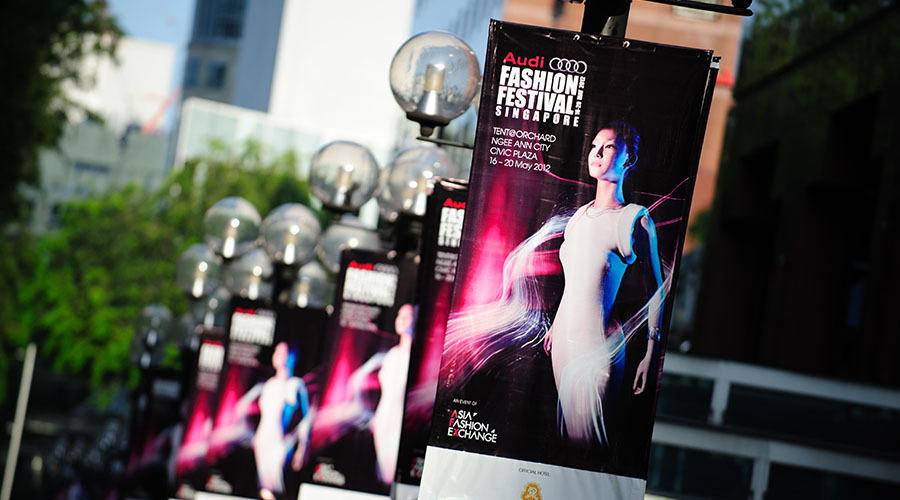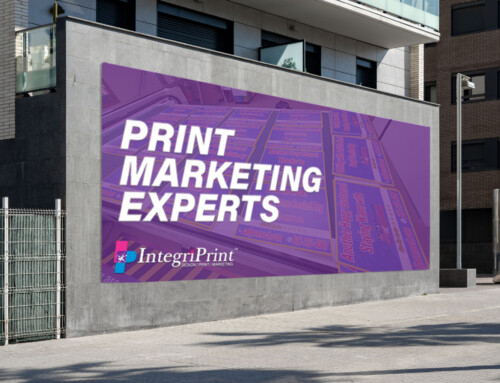When a business hosts or sponsors an event, there is opportunity to make an impression with your brand that can be remembered beyond that day. Signage and other creative displays can bring an interactive brand experience to attendees and leave them with a long lasting impression of the event.
A theme, purpose and the types of signage to use should all be important things to consider when planning an event. How can you use signage to bring success to your brand? Here are a few ways to strategize and execute the use of signage for your next event, trade show or corporate sponsorship.
Choose a theme for consistency
Branding the signage with an overall theme is important because it keeps consistency and it allows the attendees to get familiar with the idea. A theme also helps create a visual flow with the shapes and colors for signage when used in wayfinding and informative displays. Be sure to include logos of the company or companies involved with the event into the signage along with a website or phone number for attendees to learn more.
Whatever the theme of the event, bringing those visual elements, colors and messages to life through signage to engage with is very effective. For example, if your event has a beach theme, then bring themed elements into the signage design like a life-size cut-out of a sandcastle with flags that welcomes everyone at the entrance of the event. Utilize a bright color palette to create a warm and fun feel to the signage and play on words related to the beach to create the messaging.
What’s the purpose of your event signage?
Events are held for many different types of businesses and occasions. There is no one sign strategy that works for every brand. It is important to understand all the options available to display information and the best ways to apply those options. When developing a signage strategy, consider why you need the signage and what its purpose is during the event. Here are some common purposes for signage usage:
Promotional: This signage is a way to market and promote your event. It could be used prior to the day of the event or during the event. The design of these signs can be creative and utilize interactive elements like QR codes to help educate viewers about the event with a link to the event website or video. If there are tabled sections, such as a silent auction or buffet, promotional signage can help promote the activities within the event and get people to interact.
Directional: Directional signage helps guide attendees during the event and can consist of different types of signage. These signs should be strategically placed so that your attendees can easily find the event location and navigate through the event. This strategy starts in the parking lot with a welcome sign and a sign that points to the direction of the event. It may be easy enough to find the event location with an address through GPS, but the most important part in navigating your attendees is to get them from their vehicles to the main event without getting frustrated.
Informative: This signage is utilized to help provide information at the event. Tell the story behind the event’s purpose with a printed display, explain the details of a game or contest that is taking place at the event or educate attendees about your company and your purpose through some branded content on a banner.
Interactive: Creating interaction is something that would help boost your event participation and give the attendees something to remember. Interactive displays and signage can be a fun experience and they also offer opportunity to capture leads and gain new contacts. This signage could be life-size cardboard cutouts of your mascot or team members holding signs or custom printed displays, a custom printed box to hold business cards for a drawing, a standing height table for attendees to take a break and check out your promotional materials, or a spin-to-win game to attract attendees. With health being at the top of many people’s mind, utilize a full color branded sanitizing station to give your attendees and employees a little peace-of-mind during the event.
Common Types of Signage
Knowing the type of signage to use at your events will help fulfill the purpose and provide the best options for application. Here are a few common types of signs and how to apply them for event signage.
Vinyl Banners: They can be used indoors and outdoors. When it comes to displaying information on a large scale or offering a big welcoming to your attendees, banners are an important type of signage at your event location.
Retractable Banners: These banners have always been considered a staple in trade show marketing and they offer a great way to display information at corporate events as well. These can be used for any purpose and are available in tall floor style with a weighted base down to small table-top options.
Board and Easel: Providing directional and informative information can be done using a printed board on an easel. This setup is also easy to interchange boards for various purposes and can be taken down and used on-the-go for many different marketing purposes beyond events.
A-Frame Signs: A traditional and multi-purpose type of signage, A-frame or “sandwich” signs can be used indoors and outdoors. They offer a large area for signage and can be double-sided to grab attention in two directions.
Canopy/Tent: Not only are branded tents and canopies nice to keep people out of the rain, this type of signage also offers a large printed surface that can draw attention to an activity with graphics and messaging.
Floor Graphics: Whether your event is on carpet, hard floors or concrete, floor graphics are available for all surfaces. They can be used to direct attendees, offer information about the event or be used as an interactive element for a game.
When planning your next corporate event, think about how you can use signage as a communication and marketing tool to bring direction, information and interaction to your attendees. Events are meant to be memorable. Creating a signage strategy for your next event will help leave a lasting impression on your attendees and make them want to come back for the next one.






